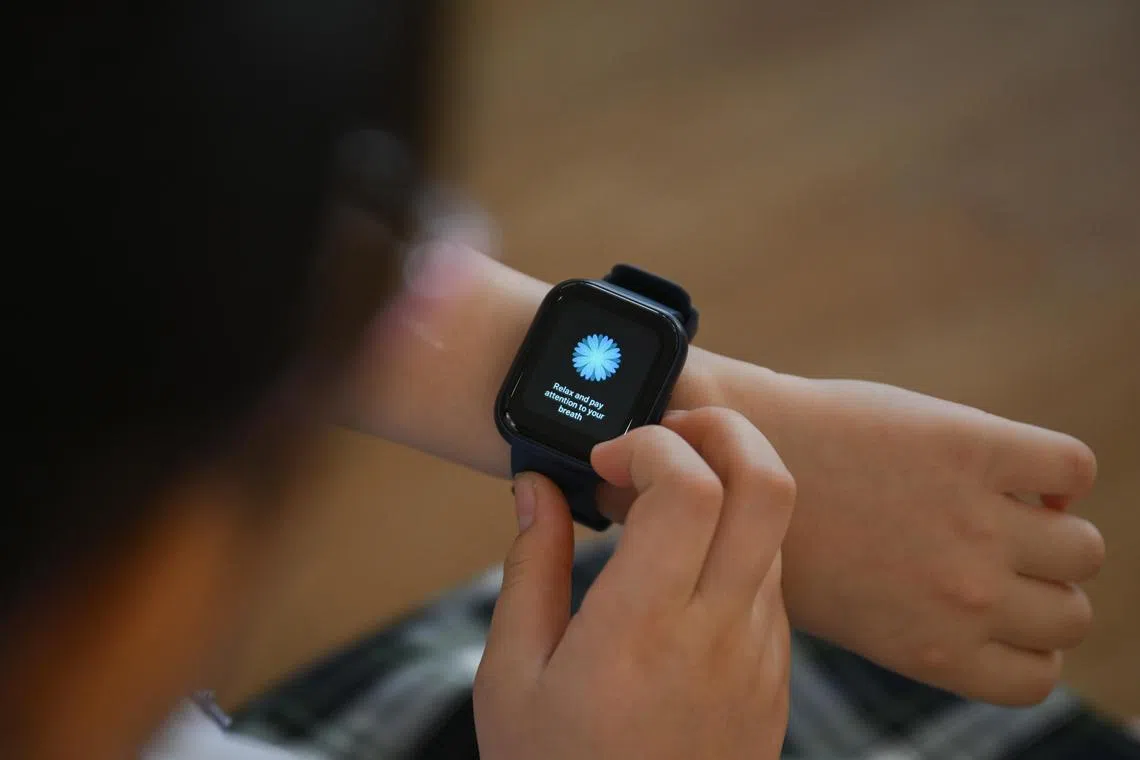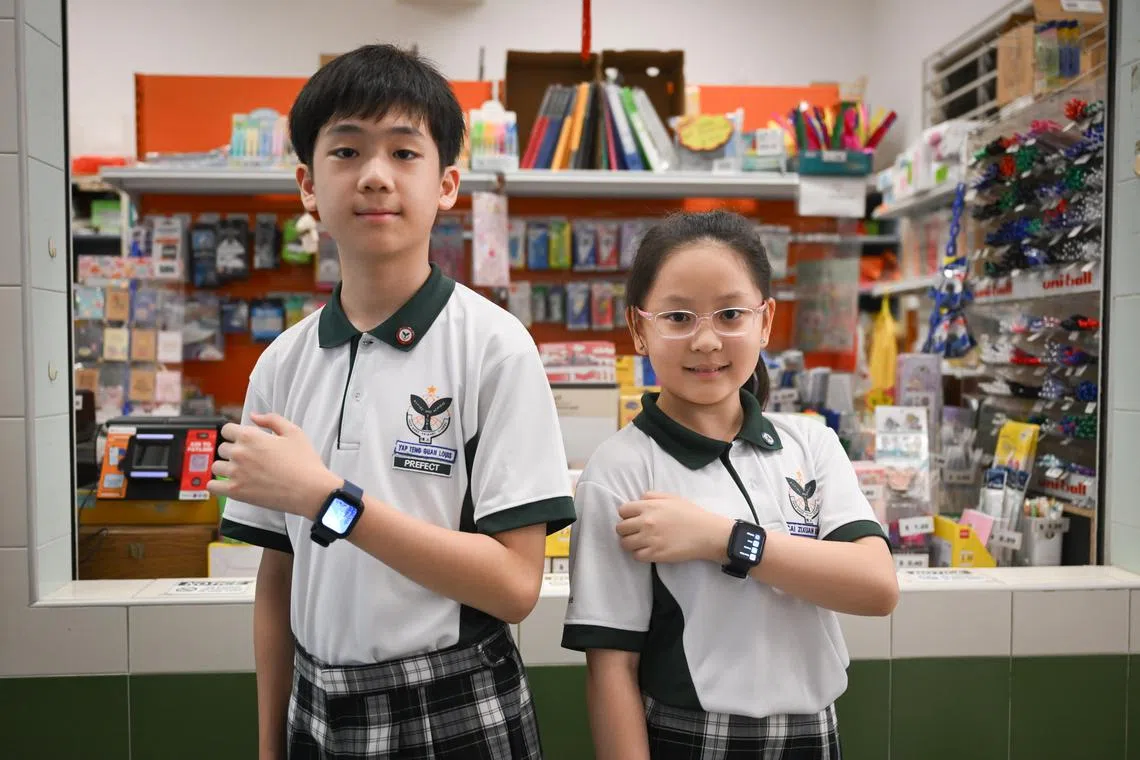More students to get Smart Buddy watches; most schools now offer cashless payment
Sign up now: Get ST's newsletters delivered to your inbox

Primary 5 pupil Louis Yap using his Smart Buddy watch to make a payment at Teck Ghee Primary School on July 24.
ST PHOTO: SHINTARO TAY
SINGAPORE - About 11,000 digital watches with a new feature that tracks calories burned will be distributed in 2025 under the POSB Smart Buddy programme, which lets students tap the watch to pay at canteen stalls and bookshops.
The roll-out follows the completion of a three-year memorandum of understanding with the Ministry of Education to have all 335 participating schools here equipped with contactless payment terminals.
POSB said it expects to register 320,000 students on the programme by the end of 2025, up from the 230,000 students in 253 schools the bank engaged in 2024.
“Our ongoing efforts include equipping young learners with the right tools, providing age-appropriate education and offering them real-world opportunities to practise healthy money habits,” said Mr Calvin Ong, head of DBS Singapore’s consumer banking group.
Launched in 2017, the Smart Buddy programme is the world’s first in-school wearable tech savings and payments solution. School vendors enter the amount for a meal or item into the payment system, and students tap their watch on a contactless terminal to pay. Through an app paired with the watch, POSB and DBS customers can manage their children’s allowance and spending habits.
Since 2017, around 78,000 watches have been distributed to students in primary and secondary schools, junior colleges and the Millennia Institute.
The latest edition of the watch is free for new joiners of the Smart Buddy programme. Existing users can buy the upgraded watch for $40 apiece. Using the device, students can track their heart rate and the number of calories burned when exercising. Another new feature guides students through breathing exercises to reduce stress.

Karena Cai, 11, trying out breathing exercises with the guidance of her Smart Buddy watch on July 24.
ST PHOTO: SHINTARO TAY
At the launch of the new watches at Teck Ghee Primary School on July 24, some canteen vendors told The Straits Times that they find it hard to revert to counting notes and coins after getting used to contactless payments.
Drink stall owner Ly Li Fang said that half of her daily sales are through contactless means. “It can be quite difficult to find different coins and notes during busy periods... It’s more convenient to accept cashless options,” she said.
Madam Tham Mei Fong, a bookstore employee at Teck Ghee, said a quarter of her daily sales are cashless.
In the first five months of 2025, around one million monthly transactions were performed via the Smart Buddy watch or card, POSB told ST.
Teck Ghee Primary School pupils said they had fun with the watch.
Primary 5 pupil Louis Yap said his parents stopped giving him cash in 2023, when he started using the watch. He also uses the watch to track his heart rate when exercising, and suggested a new location tracking feature so his parents could be informed of his whereabouts.
Primary 5 pupil Karena Cai, who has been using the watch for three years now, said she enjoys the savings feature. “I can usually save about $10 a week,” said the 11-year-old. She receives around $4 to $6 in daily allowance.
For each dollar saved in their accounts, Smart Buddy users get up to $10 a month of top-up from the bank. “I also use the watch to keep track of how many steps I take,” said Karena. “Sometimes, my sister and I will compete on how many steps we can take each day.”

Louis Yap, 11, and Karena Cai, 11, showing their Smart Buddy watches at Teck Ghee Primary School on July 24.
ST PHOTO: SHINTARO TAY
The bank has also refreshed its financial literacy curriculum under the Smart Buddy programme to include black swan events and economic shocks happening in the real world, such as the ongoing tariff war. It aims to help students understand how matters beyond their control can potentially impact years of careful savings, and why being financially prepared matters.
This is in addition to the original curriculum, which teaches healthy saving habits, the difference between needs and wants, and how cashless payment works. The first workshop teaching the refreshed content was conducted on July 24 in Teck Ghee Primary School. Nearly 1,000 students attended the 1.5-hour-long financial literacy workshop.
“This holistic approach underscores our broader mission to help raise the next generation of savers in Singapore, who will grow up to become digitally savvy adults confident with their money,” said Mr Ong.


